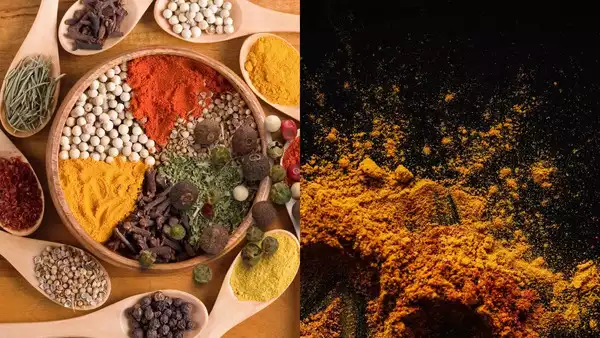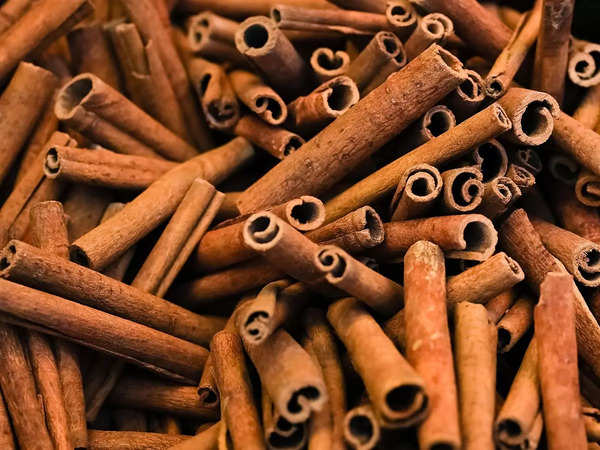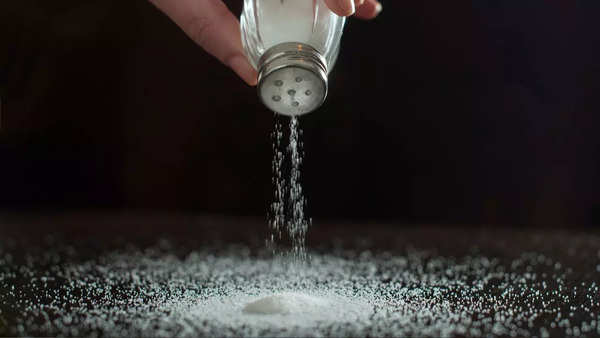appearance Examination
You can also tell a lot about spices by looking at their texture, look and feel, especially whole spices. Here are some common kitchen spices you can check here Home Ensure their accuracy by following the tips below.
black pepper
Pure black pepper should be dark brown to black in colour and have a rough and wrinkled texture. If they appear smooth, pale or oddly coloured, they may be adulterated. In fact, in most cases, black pepper is often mixed with black papaya seeds to increase their weight.
Turmeric
Checking the purity of turmeric powder may seem like a daunting task, but just by looking at it, you can understand its level of purity. Pure turmeric powder should be bright and deep yellow in colour. Any dull or inconsistent colour may indicate contamination or mixing with artificial colours.
Garam Masala
This is another commonly used spice in Indian kitchens, which is made by grinding several spices together. Make sure the spice mix has a uniform colour and a fine texture. Variation in colour or the presence of lumps may indicate the presence of fillers or artificial ingredients.
Salt
Salt is another essential spice used in everyday food. Interestingly, it is very easy to check the purity of salt; just look at its texture, but if it appears white and crystalline, it is pure, but if it appears off-white or has obvious impurities, there are chances that it may be adulterated with other substances.

Coriander Powder
Another common spice is coriander powder, which is widely used in everyday cooking. However, an easy way to check its purity is to look at it; if it appears light brown in colour and has a fine texture, it is pure. But if it has black spots or irregularities, it could be a sign of adulteration.
cumin powder
Cumin powder should be light brown in colour and have a uniform and fine texture. Any lumps or inconsistent colour may indicate mixing with other low-quality substances.
Smell Test
Another easy way to check quality One way to check the purity of spices is to smell them, because the smell of spices can tell a lot about their freshness and purity.
black pepper
Known for its pungent, spicy flavor, pure black pepper has a pungent and pungent aroma. If the scent is weak or different from what is expected, it is likely that poor quality additives have been added.
Turmeric
Turmeric is one of the most widely used powerful spices, loved for its countless health benefits. In fact, pure turmeric should have a strong, earthy aroma. A lack of smell or a mild odor may indicate that the turmeric is not pure.
Garam Masala
Real garam masala should have a complex, aromatic smell due to the blend of spices it contains. If the aroma is weak or off, it may be compromised.
Salt
The easiest way to check the purity of salt is to smell it, as pure salt has a clean, mineral-like smell. But if it smells unusual, it may be adulterated or contaminated.
Coriander Powder
You can check the purity of coriander powder by smelling it. If the powder smells fresh and pungent, as well as warm, citrusy, then it is pure and good to eat.
cumin powder
Pure cumin has a distinctive, nutty aroma. If the smell is faint or altered, other powders can be added to the cumin.

taste test
black pepper
Pure black pepper tastes pungent and spicy. If it tastes bland or does not have the desired spiciness, it may be because other substances have been added to it.
Turmeric
Pure turmeric tastes slightly bitter and earthy. If it tastes bad or lacks depth, there is a possibility that it may be adulterated.
Garam Masala
Real garam masala should have a balanced, rich flavor and a spicy taste. If it tastes bland or dull, it may contain fillers or artificial ingredients.
Salt
Pure salt tastes clean and salty. Any bitterness or unusual taste may indicate impurities.
Coriander Powder
Pure coriander powder should have a sweet, citrusy flavor. If it tastes bitter or has other unusual flavors, it may be contaminated.
Cumin powder: Pure cumin has a warm and slightly nutty flavor. A change in flavor may indicate that other powders have been added.

Water Solubility Test
To check the quality of spices, water solubility test can be done, in which the spices are mixed in water to check their quality and efficacy.
black pepper
Add a pinch of ground black pepper to the water. The pure black pepper will settle at the bottom. If the water becomes cloudy, other substances may be mixed in it.
Turmeric
Mix turmeric powder with water. Pure turmeric usually settles at the bottom, while adulterated turmeric can form a cloudy solution.
Garam Masala
Since garam masala is a mixture, this test may be less conclusive. However, if it produces a lot of cloudiness, it may contain fillers.
Salt
Pure salt dissolves completely in water. If any residue or impurities remain in the salt, other substances may mix with the salt.
Coriander Powder
Pure coriander powder will also settle down. If the water becomes cloudy or particles start floating in it, then understand that it is adulterated.
cumin powder
Add cumin powder to the water. Pure cumin powder should settle down, while adulterated cumin can make the water cloudy.

Paper Test
A great way to check the freshness and purity of spices is the paper test, which involves placing the spices in a paper bag and checking their stains and colour. Here are some spices and how you can do the paper test at home.
black pepper
Sprinkle black pepper on a piece of white paper and leave it for a few hours. Pure black pepper should clear the stain. If there is any residue or any special change on the paper, it may be adulterated.
Turmeric
Place a little turmeric on a white paper. Pure turmeric can leave a bright yellow stain. Adulterated turmeric can make the stain lighter or uneven.
Garam Masala
Sprinkle some garam masala on a white paper and observe. Pure garam masala will leave a uniform color without any additional residue.
Salt
Spread a little salt on a piece of white paper. Pure salt should leave a clear mark. If there are any other particles or residues on the salt, the salt may have been contaminated with something else.
Coriander Powder
Sprinkle coriander powder on a white piece of paper. Pure coriander powder will leave a light brown stain without any lumps or residue.
cumin powder
An easy way to check the purity of cumin is to put a small amount of it on a paper; if the cumin is pure, it will leave a uniform light brown mark on the white paper. Any clumps or residue may indicate adulteration.
Heating Test
Heat test is also an easy way to check the freshness and purity of spices. Spices are heated to determine their texture and aroma.
black pepper
Heat a small amount of black pepper in a pan. Pure black pepper will emit a strong aroma. If the smell is weak or unusual, it may be adulterated.
Turmeric
Warm the turmeric powder a little. Pure turmeric should have a distinct earthy smell and color. If it doesn’t, it may be adulterated.
Garam Masala
Heat a pinch of garam masala to check for aroma. Pure garam masala should emit a complex, fragrant smell. A lack of aroma may indicate fillers.
Salt
Heat doesn’t cause any noticeable changes to salt, but if it’s mixed with other substances, it can produce strange odors or residues.
Coriander Powder: Coriander powder should give out a warm, citrusy smell when heated. If it has no smell, it may be a sign of adulteration.
Cumin powder: Pure cumin powder should release a rich, nutty aroma when heated. If the smell is mild, more cumin may be added.
chemical reactions
Turmeric: Add a few drops of iodine solution to turmeric powder. The color of pure turmeric will not change, while the color of adulterated turmeric may appear blue or green.
Garam Masala: There is no specific test to check the purity of Garam Masala. It can be checked only by looking at its appearance and aroma.
Salt: Pure salt should not react with iodine or other common chemicals used in testing. If it changes color or has a reaction, it may have been adulterated.
Coriander Powder: Chemical tests are less practical, but consistency in taste and aroma can be a good indicator of purity.
Cumin Powder: Like coriander, the purity of cumin is best tested through visual and aroma checks, as chemical tests are not typically used.
Texture Testing
Black Pepper: Pure black pepper should be rough and wrinkled. Smooth, uniform black pepper may be adulterated.
Turmeric: Pure turmeric powder should have a fine and consistent texture. Adulterated turmeric may feel rough or inconsistent.
Garam masala: It should have a fine and uniform texture. Any lumps or irregularities indicate that it contains fillers or artificial ingredients.
Salt: Pure salt should have a uniform crystalline texture. Impurities can cause it to appear lumpy or uneven.
Coriander Powder: It should have a fine and uniform texture. If the texture is thick or coarse it means it has been mixed with other powders.
Cumin powder: Pure cumin seeds should be finely ground. Rough or uneven texture may indicate adulteration.
















